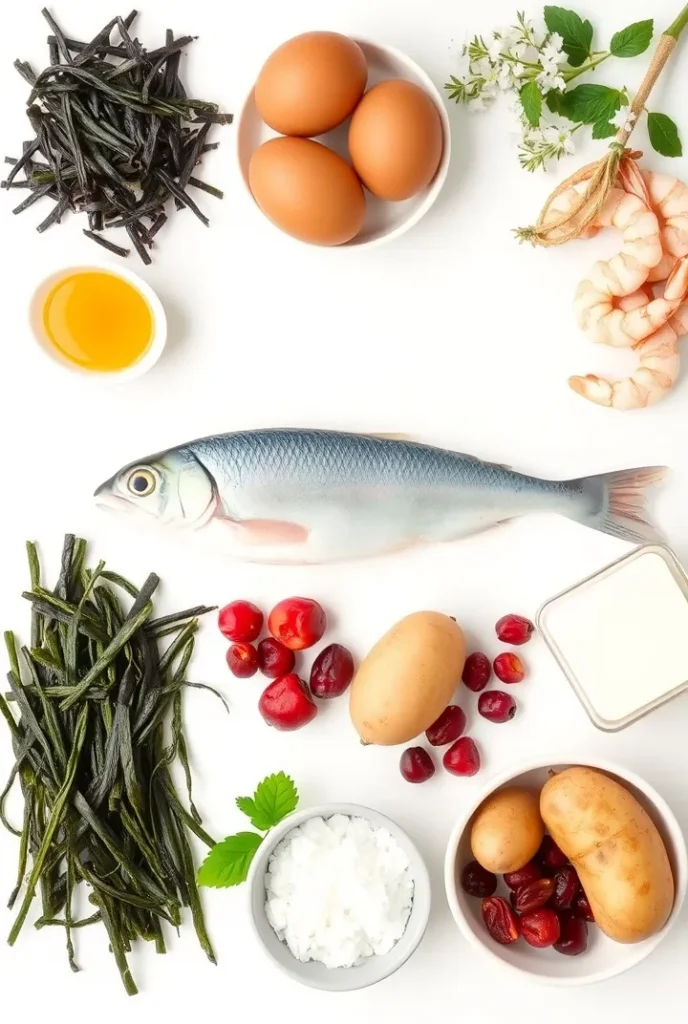Ladies, let’s talk about something your thyroid absolutely loves but you might not be getting enough of. Iodine. This tiny mineral packs a huge punch when it comes to keeping your body running smoothly. Think of it as your thyroid’s best friend and your metabolism’s secret weapon.
Your thyroid gland needs iodine to produce hormones that control everything from your energy levels to your mood. Without enough iodine, you might find yourself feeling sluggish, gaining weight unexpectedly, or dealing with brain fog that makes Monday mornings even worse than usual.
The good news? Getting more iodine doesn’t require expensive supplements or complicated meal plans. You just need to know which foods to stock up on during your next grocery run.

Why Women Need More Iodine
Women have unique iodine needs that men simply don’t face. During pregnancy, your iodine requirements shoot up because you’re supporting two thyroid glands instead of one. Breastfeeding moms need even more to ensure their babies get enough through breast milk.
Take Charge of Your Health with The Home Doctor
Discover real-world remedies and first-aid solutions you can use when help isn’t around.
👉 Claim Your Home Doctor GuideBut here’s what many women don’t realize. Even if you’re not pregnant or nursing, your monthly cycle affects how your body uses iodine. That’s why some women notice their energy crashes right before their period hits.
The recommended daily intake sits at 150 micrograms for most adult women. Pregnant women need 220 micrograms, while breastfeeding mothers should aim for 290 micrograms. These numbers might seem small, but they’re absolutely crucial for your wellbeing.
The Top 25 Iodine-Rich Foods Every Woman Should Know
1. Seaweed (The Iodine Superstar)
Kelp, nori, and wakame are hands down the richest sources of iodine on the planet. Just one gram of kelp can contain up to 2,984 micrograms of iodine. That’s twenty times your daily requirement! Add dried seaweed to your salads or try those crispy seaweed snacks from the Asian food aisle.
2. Cod
This mild white fish delivers about 158 micrograms of iodine per 4-ounce serving. Cod is perfect for women who want to boost their iodine without dealing with a strong fishy taste. Bake it with lemon and herbs for a simple weeknight dinner.
3. Iodized Salt
The easiest way to get iodine is sitting right there in your spice cabinet. One teaspoon of iodized salt contains about 400 micrograms of iodine. Just remember that a little goes a long way, and too much sodium isn’t great for your heart.
4. Shrimp
These little pink powerhouses pack 35 micrograms of iodine per 3-ounce serving. Shrimp cooks in minutes and works in everything from pasta dishes to salads. Plus, they’re loaded with protein to keep you satisfied.
5. Tuna
A 3-ounce serving of canned tuna gives you about 17 micrograms of iodine. Choose tuna packed in water instead of oil to keep things lighter. Tuna salad sandwiches just became a thyroid-friendly lunch option.
6. Eggs
One large egg contains approximately 24 micrograms of iodine, with most of it concentrated in the yolk. Eggs are incredibly versatile and make getting your daily iodine as easy as scrambling up breakfast.
7. Dairy Products
Milk, yogurt, and cheese are excellent iodine sources because dairy cows often receive iodine supplements. One cup of milk provides about 85 micrograms of iodine. Greek yogurt is another great option that doubles as a protein boost.
8. Lima Beans
These large, flat beans contain about 8 micrograms of iodine per half-cup serving. They’re perfect for adding to soups, stews, or grain bowls. Some people call them butter beans, and they really do have a creamy, buttery texture.
9. Prunes
Dried plums aren’t just good for digestive health. Five prunes give you about 13 micrograms of iodine. They make a great afternoon snack and satisfy that sweet tooth naturally.
10. Bananas
One medium banana contains approximately 3 micrograms of iodine. While that might not sound like much, bananas are so easy to incorporate into your daily routine that they add up quickly.
11. Strawberries
A cup of fresh strawberries provides about 13 micrograms of iodine. They’re delicious on their own, mixed into yogurt, or blended into smoothies. Plus, the vitamin C helps your body absorb other nutrients better.
12. Cranberries
These tart berries contain about 400 micrograms of iodine per 4 ounces. Fresh cranberries work well in muffins and sauces, while dried cranberries are perfect for trail mix or salads.
13. Navy Beans
Half a cup of cooked navy beans delivers about 32 micrograms of iodine. These small white beans are incredibly versatile and work in everything from chili to hummus.
14. Potatoes
One medium baked potato with the skin on contains about 60 micrograms of iodine. The skin is where most of the iodine lives, so don’t peel it off. Sweet potatoes have iodine too, though slightly less than regular potatoes.
15. Turkey Breast
A 3-ounce serving of roasted turkey breast provides about 34 micrograms of iodine. Turkey is leaner than many other meats and works well in sandwiches, salads, or as a main dish.
16. Himalayan Pink Salt
While not as rich in iodine as iodized table salt, Himalayan pink salt still contains trace amounts of this important mineral. It adds a subtle flavor that many people prefer over regular salt.
17. Lobster
This fancy shellfish contains about 100 micrograms of iodine per 3-ounce serving. Lobster might be a special occasion food, but it’s worth knowing about when you want to splurge on something iodine-rich.
18. Scallops
These tender mollusks provide about 90 micrograms of iodine per 3-ounce serving. Scallops cook quickly and have a naturally sweet flavor that pairs well with many different seasonings.
19. Cheddar Cheese
One ounce of cheddar cheese contains approximately 12 micrograms of iodine. Cheese is an easy way to add iodine to sandwiches, salads, or just about any dish that needs a flavor boost.
20. Corn
One cup of corn provides about 14 micrograms of iodine. Fresh corn on the cob is a summer favorite, but frozen corn works just as well in soups, salads, and stir-fries.
21. Pineapple
This tropical fruit contains about 1 microgram of iodine per cup. While the amount is small, pineapple is so delicious that it’s easy to eat multiple servings. Plus, it’s packed with vitamin C and enzymes that support digestion.
22. Rhubarb
One cup of diced rhubarb contains about 1 microgram of iodine. This tart vegetable (yes, it’s technically a vegetable) works wonderfully in pies, jams, and baked goods.
23. Watercress
This peppery green contains small amounts of iodine and makes a great addition to salads and sandwiches. It has a distinctive flavor that wakes up your taste buds.
24. Green Beans
Half a cup of green beans provides about 3 micrograms of iodine. They’re easy to prepare and go with almost any main dish. Steam them lightly to preserve their nutrients and crisp texture.
25. Bread
Many commercial breads are made with iodized salt or contain iodate dough conditioners. Two slices of white bread can provide about 45 micrograms of iodine. Whole grain breads often contain even more.
Making Iodine Work for You
Getting enough iodine doesn’t have to be complicated. Start by incorporating a few of these foods into your weekly meal rotation. Maybe try seaweed snacks instead of chips, or add some shrimp to your pasta night.
Remember that balance is key. While iodine deficiency is a real concern, getting too much can also cause problems. Stick to food sources rather than supplements unless your doctor specifically recommends them.
Your thyroid will thank you for the extra attention, and you’ll likely notice improvements in your energy levels, mood, and overall health. Sometimes the smallest changes make the biggest difference in how we feel every day.

Lifebing is driven by an unrelenting passion for promoting health and well-being, our team is wholly committed to curating exceptional content and immersive experiences.
